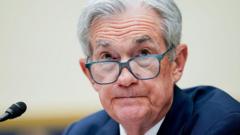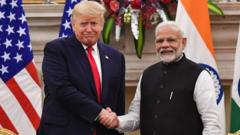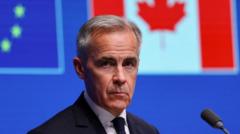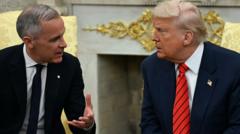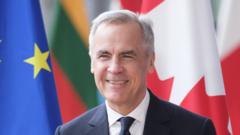Mexican factories are rapidly adapting to changing tariffs and trade agreements with the U.S. amidst rising costs and supply chain uncertainties, particularly in electronics and home appliances.
Caught in Tariffs: How Mexico is Adjusting to U.S. Trade Instability

Caught in Tariffs: How Mexico is Adjusting to U.S. Trade Instability
Shift in manufacturing strategies reflects ongoing economic challenges
The factory located in northern Mexico serves as a crucial supplier for U.S. markets, particularly in the production of air-conditioning and refrigeration units. Approximately 80% of its output is directed towards American consumers, making the impacts of international trade policies profoundly significant for its operations.
The situation intensified with President Trump's implementation of tariffs that threatened to disrupt business operations significantly. However, the factory was able to devise an adaptive strategy amidst these challenges. Just before the tariffs were enforced in March, only 40% of exports from the facility complied with the pre-existing trade pact signed during Trump's first term. Yet when he ceased tariffs on qualifying Mexican goods, the company's leadership recognized new paths for survival and growth.
Key adjustments included actively sourcing materials from local Mexican suppliers, assessing which products were already compliant with trade regulations, and reconsidering plans to import goods from outside North America. Xavier Casas, overseeing operations at the Danfoss factory in Apodaca, likened navigating this turbulent trade environment to a flight experiencing turbulence: “When you’re on a plane and there’s turbulence, you get really scared and you hold onto your seat,” he remarked. “But, you know, 99 percent of the time, the plane is going to land.”
Through these strategies, Mexican manufacturers like Danfoss are working hard to secure their positions in a rapidly changing trade landscape, aiming to maintain a robust supply chain that meets U.S. demands while mitigating risks associated with international tariffs.
The situation intensified with President Trump's implementation of tariffs that threatened to disrupt business operations significantly. However, the factory was able to devise an adaptive strategy amidst these challenges. Just before the tariffs were enforced in March, only 40% of exports from the facility complied with the pre-existing trade pact signed during Trump's first term. Yet when he ceased tariffs on qualifying Mexican goods, the company's leadership recognized new paths for survival and growth.
Key adjustments included actively sourcing materials from local Mexican suppliers, assessing which products were already compliant with trade regulations, and reconsidering plans to import goods from outside North America. Xavier Casas, overseeing operations at the Danfoss factory in Apodaca, likened navigating this turbulent trade environment to a flight experiencing turbulence: “When you’re on a plane and there’s turbulence, you get really scared and you hold onto your seat,” he remarked. “But, you know, 99 percent of the time, the plane is going to land.”
Through these strategies, Mexican manufacturers like Danfoss are working hard to secure their positions in a rapidly changing trade landscape, aiming to maintain a robust supply chain that meets U.S. demands while mitigating risks associated with international tariffs.



